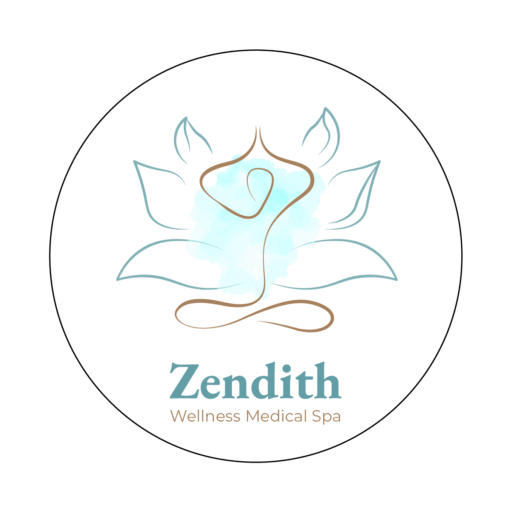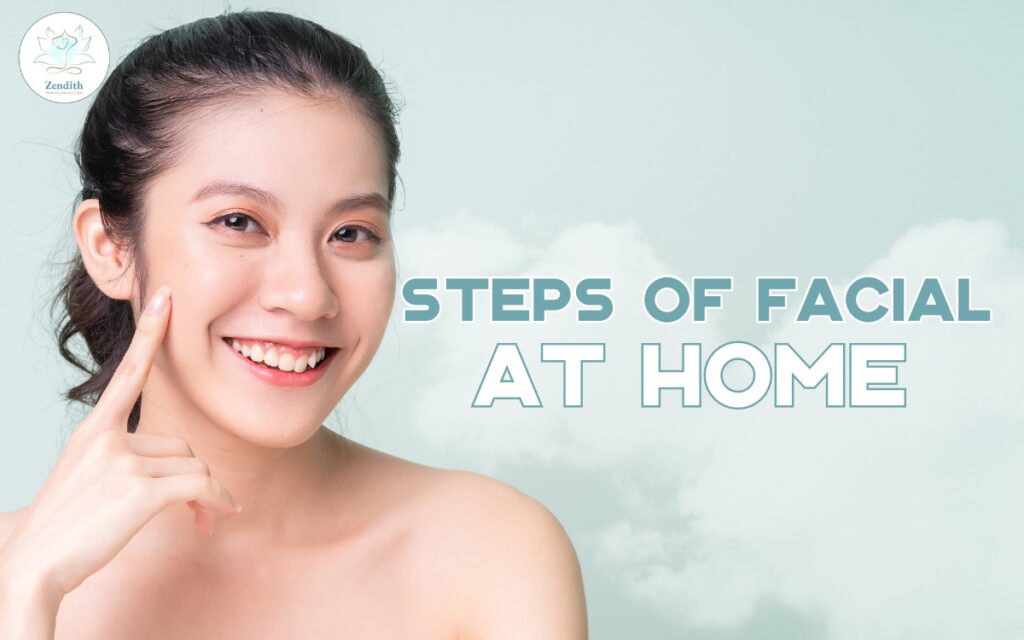Taking care of your skin at home has become a popular trend thanks to its convenience and long-term ability to maintain healthy skin. A simple yet correct facial routine not only helps to deeply cleanse, hydrate, and brighten your skin, but also provides relaxation and stress relief after a long day. In this article, we will explore the 8 Steps of Facial at Home to achieve effective cleansing, hydration and deep skin restoration that you simply can’t miss!
Step 1: Cleanse
Cleansing is the foundation that allows the following skincare steps to work at their best. If you wear makeup, start with a cleansing oil or makeup remover to get rid of cosmetics and surface dirt. Then, wash your face with a gentle foaming gel or exfoliating cleanser to deeply remove any remaining impurities.
Experts recommend massaging the cleanser onto dry skin first, then wetting your fingertips and massaging again to maximize effectiveness. To rinse, use a microfiber cloth to gently lift away dirt and ensure all makeup residue is removed.
Choose a sulfate-free, lightly foaming cleanser with moisturizing ingredients so your skin doesn’t dry out. Natural oils are essential to maintain balance—stripping them completely may trigger excess oil production and disrupt your skin barrier.
- Oily skin: Choose a cleanser that controls and removes excess oil.
- Dry skin: Opt for a gentle cleanser that preserves natural oils.
- Normal skin: A cleanser that removes impurities and lightly exfoliates is ideal.

Cleansing with both makeup remover and face wash is a crucial step to effectively eliminate dirt and sebum.
Step 2: Exfoliate
Exfoliation is the next step of facial at home that you cannot skip if you want smoother skin and better absorption of skincare products. When dead skin cells build up, your complexion can look dull, pores may get clogged, and nutrients won’t penetrate effectively. Exfoliation helps remove accumulated debris, clears pores, and enhances skin brightness.
There are two main types of exfoliation:
- Physical exfoliation: Uses small particles or tools to manually remove dead cells, such as facial scrubs, at-home microdermabrasion devices, or dermaplaning blades.
- Chemical exfoliation: Uses acids like lactic or glycolic acid to gently dissolve dead skin cells without scrubbing.
For the best results at home, experts suggest combining both methods: start with a chemical exfoliant to soften and dissolve dead cells, then after about 10 minutes, follow with a physical scrub to ensure complete removal while boosting circulation and radiance.
Exfoliation frequency depends on your skin type:
- Oily skin: 4–5 times per week to control excess oil and prevent breakouts.
- Dry skin: About once a week to avoid stripping natural oils.
- Normal/Combination skin: 1–2 times per week, depending on your needs and sensitivity.
Note: Always exfoliate gently, rinse thoroughly, and immediately apply a moisturizer afterward to lock in hydration and keep your skin soft.

Exfoliating at home is an essential step to remove dead cell buildup and keep pores clear.
Step 3: Steam
After exfoliation, your skin is ready to absorb nutrients more effectively. Steaming helps open pores, soften hardened sebum (blackheads), boost circulation, and hydrate the skin. This makes blackhead removal easier while leaving your skin smoother and more radiant.
How to steam at home:
- Pour warm or hot (not boiling) water into a bowl or small basin.
- Place a towel over your head and lean your face toward the bowl, keeping about 15–20 cm distance to avoid overly hot steam.
- Steam for 5–10 minutes. Breathe deeply to relax while allowing the steam to penetrate your skin.
- After steaming, gently pat your face dry with a soft towel. Then, if needed, proceed with blackhead extraction before applying a mask or moisturizer to lock in hydration.
Important notes:
- After steaming, skin becomes soft and prone to dehydration, so moisturize immediately to prevent dryness or tightness.
- Steaming may not be suitable for sensitive skin, hyperpigmentation, inflamed acne, or rosacea. If unsure, consult a dermatologist before trying.
 Steaming is one of the essential 8 Steps of Facial at Home, helping relax your skin, open pores, and enhance absorption of skincare products.
Steaming is one of the essential 8 Steps of Facial at Home, helping relax your skin, open pores, and enhance absorption of skincare products.
Step 4: Extract
Blackheads form when excess oil and dead skin cells clog pores. If left untreated, they can cause dullness, enlarged pores, and even inflamed breakouts. Proper extraction is a vital facial at home step to clear the skin, smooth its texture, prevent infection, and improve absorption of subsequent skincare products. However, this must be done carefully to avoid skin damage or scarring.
How to extract blackheads at home:
- Prepare and sanitize: Wash your hands thoroughly with soap and warm water. If using an extraction tool, follow the manufacturer’s instructions. Cleanse your face before starting.
- Protect the skin: Wrap your fingers with soft tissue or cotton to prevent bacteria from directly touching your skin.
- Extract: Locate the blackhead and gently press around it with your fingers or tool, applying even, light pressure until the plug is released. Adjust your angle if needed, and never force extraction if it doesn’t come out.
- Aftercare: Gently dab the treated area with a cotton pad or soft towel. Apply an acne treatment or antibacterial solution to prevent infection and support healing.
Tips: Only extract softened blackheads, avoid inflamed or pus-filled acne, and never press too hard to prevent pore enlargement or scarring. Always cleanse and moisturize before and after extraction to protect your skin barrier.

Removing blackheads helps clear clogged follicles, leaving the skin smoother and more refined.
Step 5: Mask
Applying a mask at home is an essential skincare step to rehydrate, soothe, nourish, and restore the skin after cleansing, exfoliating, or steaming. Regular masking helps keep your skin soft, radiant, and less prone to dryness, irritation, or clogged pores. It also offers a calming self-care moment to relax your mind.
Popular types of masks:
- Gel masks: Cooling and soothing, suitable for all skin types, especially redness-prone or rosacea-prone skin.
- Clay masks: Ideal for oily or congested skin. Clay absorbs impurities and excess oil.
- Cream masks: Rich in lipids, oils, and nutrients, perfect for dry or dehydrated skin.
Sheet masks: Usually infused with gel or serum, they deliver intense hydration – ideal for dry skin.
You can also create DIY masks at home using natural ingredients like yogurt, honey, oatmeal, avocado, or papaya. Choose the right mask for your skin type, leave it on for about 10–20 minutes, then rinse off with a damp cloth for best results.

Daily masking is a powerful hydrating step to keep your skin plump, refreshed, and silky smooth.
Step 6: Treat
After cleansing, exfoliating, steaming, and masking, the treatment step delivers active ingredients deep into the skin to target specific concerns. This is a crucial step for improving wrinkles, pigmentation, loss of elasticity, and other signs of aging, while also nourishing the skin from within. Treatments not only address skin issues but also help the complexion become healthier, firmer, smoother, and more radiant. When done correctly and consistently, your skin will show visible improvements over time.
Benefits of serums and targeted treatments:
- Wrinkle reduction: Retinol or phyto-retinol stimulates collagen renewal, softens fine lines, and improves elasticity.
- Brightening and pigmentation balance: Vitamin C serum helps fade dark spots, even out skin tone, and provides strong antioxidant protection.
- Hydration and repair for dry or sensitive skin: Peptides and niacinamide strengthen the skin barrier, reduce redness and flaking, and keep skin smooth.
- Antioxidant defense and anti-aging: Vitamins A, C, E, and antioxidants neutralize free radicals, protecting the skin from environmental damage.
How to choose and use serum:
- Pick a serum that matches your skin needs: brightening, anti-aging, hydrating, or calming.
- Apply a small amount evenly on the face and neck, gently massaging to aid absorption.
- Use consistently, usually 1–2 times daily, followed by moisturizer to lock in hydration and enhance results.

Using a targeted serum is an essential step to treat skin concerns such as acne, dark spots, and aging.
Step 7: Moisturize
Moisturizing is the final yet essential step in any skincare routine. After cleansing, exfoliating, steaming, masking, and applying serum, your skin needs to lock in all the nutrients, maintain hydration, balance oil and water, and strengthen its natural barrier.
Moisturizing not only keeps the skin soft and smooth but also helps sustain balance, enhances absorption of serums and masks, and protects against environmental stressors. Done regularly in the morning and evening, it keeps your skin healthy, radiant, and youthful. Skipping this step may cause dehydration, dryness, irritation, or even trigger excess oil production.
How to choose a moisturizer for each skin type:
- Oily skin: Lightweight lotions or gels that absorb quickly and hydrate without greasiness.
- Dry skin: Rich creams with lipids and deep hydrating ingredients to soften and prevent water loss.
- Normal/Combination skin: A balanced moisturizer; apply more to dry areas and less to oily areas.
Application tips:
- Take a small amount and apply evenly on the face and neck.
- Massage gently in upward motions to improve absorption and stimulate circulation.

Moisturizing is one of the most important steps of facial at home, ensuring deep hydration and building a barrier to lock in moisture.
Step 8: Massage
Adding facial massage to your at-home skincare routine not only provides relaxation but also boosts skincare effectiveness. Massage stimulates blood circulation, promotes lymphatic drainage, and delivers more oxygen and nutrients to the skin. The result is plumper, brighter skin with reduced puffiness and fatigue.
Massage also helps reduce dullness, soothe sensitive or irritated areas, and improve overall skin tone and smoothness. You can use your fingers for massage or incorporate facial rollers and facial oils to enhance absorption while creating a protective, moisture-locking “seal” for the skin.
When massaging, always move from the center outward and upward, avoiding tugging the skin—especially around the delicate eye area.
Choosing facial oils by skin type:
- Oily skin: Jojoba oil or sesame oil helps regulate sebum production.
Dry skin: Coconut oil, borage oil, rosehip oil, or avocado oil provide deep nourishment. - Combination/Normal skin: Frankincense or marula oil are gentle and safe options.
Finally, after massage, don’t forget to apply an eye cream gently around the eye area to hydrate, protect, and soften this delicate skin.

Facial massage done correctly at home is a key step to relax the skin and improve product absorption.
These are the 8 Steps of Facial at Home that should never be skipped in your at-home skincare routine. Each step plays an essential role—whether it’s cleansing, exfoliating, hydrating, or nourishing your skin. Practicing facial skincare properly at home is one of the most effective ways to achieve deep hydration, restore skin health, and maintain a radiant, youthful complexion.

